Magnesium sulfate, commonly known as Epsom salt, is a very popular compound in horticulture since it has characteristics that are good for growing and maintaining plants. The objective of this article is to interrogate the efficacy of Epsom salt in gardening via its scientific basis, indicating how it leads to better nutrient uptake by plants, improved plant vitality, and an increase in chlorophyll synthesis. Plant species-specific application of Epsom salt by gardeners will depend on their understanding of the underlying mechanisms. This discussion examines the empirical benefits and uses of Epsom salt.
Introduction to Epsom Salt
Epsom salt, a hydrated sulfate mineral, consists of magnesium, sulfur and oxygen. Magnesium is the major constituent which is an essential element in plant physiology. Magnesium acts as the central atom in chlorophyll molecule that facilitates photosynthesis necessary for plant growth. Also, magnesium helps in activation of enzymes required for various biochemical reactions within the plant. The sulphur in Epsom salt is involved in formation of fundamental amino acids thereby promoting protein synthesis and improving general plant metabolism. This makes Epsom salt an important supplement to gardeners since it provides these vital nutrients resulting into healthier plants, greener leaves and higher yields.
Definition and composition of Epsom Salt (magnesium sulfate)
Epsom salt which is chemically known as magnesium sulfate (MgSO₄·7H₂O) is composed 9.8% magnesium (Mg), 13% sulfur (S) and 77.2% oxygen and water by weight MgSO₄ on the other hand has no water molecules attached to it while its heptahydrate form is most commonly used in horticulture practices. It appears as white crystalline substance highly soluble in water hence easily absorbed by plant roots when dissolved or applied to soil or foliage.Magnesium element assists for example in chlorophyll production and enzymatic activation which improves photosynthesis rates as well as metabolic functions; however sulphur plays a crucial role e.g., synthesizing amino acids, proteins and vitamins supporting cell processes against diseases.This gave rise to specific technical parameters such as optimal concentration levels typically one to two tablespoons per gallon of water for foliar application that sought effectiveness with minimum chances of over – doing.
Historical uses in agriculture and gardening
Epsom salts have been used historically for agricultural purposes since many centuries ago.The first users from seventeenth century understood its usefulness concerning fertility enhancement with regard to soils productivity.In regions where soil magnesium was deficient, the magnesium component of Epsom salt became essential in promoting crop yields and healthier plant growth. It is water soluble therefore suitable for use in irrigation systems since it ensures that nutrients are uniformly distributed. In the twentieth century, agricultural scientists officially accepted Epsom salt and began carrying out a number of research to prove its efficiency.There were several trials conducted by researchers which showed that proper magnesium levels are responsible for increased chlorophyll synthesis as well as enzyme activation that supports higher photosynthesis rates.On the other hand sulfur was found to be crucial in assembling certain amino acids and proteins necessary for plant metabolism and defense mechanisms.Certain technical parameters like optimum concentration which is typically 1-2 tablespoons per gallon of water when applying foliarly have been recommended to increase efficacy while reducing chances of over – application. This historical precedent underscores the enduring value of Epsom salt as a versatile and reliable supplement in both traditional and modern horticultural practices.
Importance of Magnesium for Plant Growth
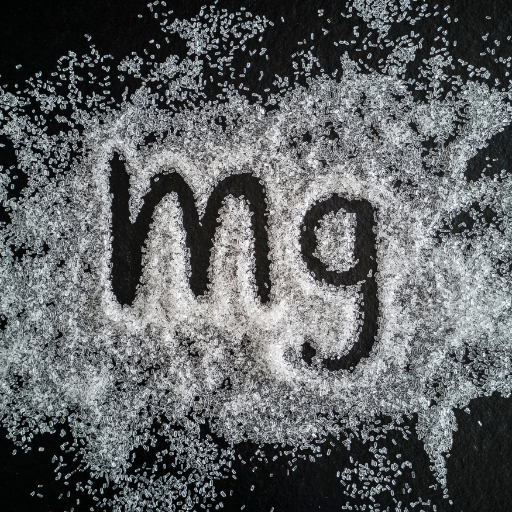
Crucial role of magnesium-containing chlorophyll, the central unit for photosynthesis in plant growth and development. This element acts as a catalyst in the process of converting light energy into sugars necessary for plant activities and growth. Further, it serves as a cofactor in numerous enzyme systems controlling different vital metabolic reactions like protein and amino acid synthesis. It ensures that there is enough nutrient uptake and metabolism to make plants grow well. Inadequate supply of this element causes a condition known as chlorosis where leaves turn yellow because there is not enough chlorophyll produced resulting into low productivity and retarded growth. Therefore, maintaining optimum levels of magnesium content are critical to ensuring sound agricultural productivity.
Magnesium Role in Photosynthesis
The significance of Magnesium comes from its being part of a molecule essential for making chlorophyll which allows plants to trap solar radiation and convert it into chemical energy. Moreover, magnesium activates enzymes involved in ATP (adenosine triphosphate) production from ADP (adenosine diphosphate) during photosynthesis through respiration; however, it is beyond just the chlorophyll component itself since adenosine triphosphatase activation involves hydrolysis. Technical studies have shown that plants need approximately 0.5% magnesium in their dry weight for optimal photosynthetic activity. The functioning of the thylakoid membranes within the chloroplasts depends on magnesium ions which are needed for stability purposes too. This strongly supports effective light capture as well as maintenance of integrity and structure organization of photosynthetic apparatuses through proper soil magnesium levels between 50-100 ppm preventing deficiencies hence promoting high level of photosynthetic performance.
Effect on Plant Health due to Lack of Magnesium
Yellowing between leaf veins while veins remain green reveals most symptoms associated with magnesium deficiency in plants interveinal chlorosis. Chlorophyll production is hampered leading to decreased rates at which matter is fixed and energy is converted. Thus, plants grow more slowly and accumulate less biomass. Deficiency also affects activation of RuBisCO (ribulose-1,5-bisphosphate carboxylase-oxygenase) and ATP synthase or photosynthesis enzymes involved in carbon fixation and ATP synthesis respectively. Furthermore, enzyme activations are impaired thus making cell membrane’s integrity compromised besides rendering the magnesium-deficient plants highly susceptible to both diseases as well as environmental stresses.
Quantification of the problem shows that a reduction in Mg content below 0.2% in plant tissue can significantly decrease RuBisCO activity hence affecting photosynthetic efficiency. When soil tests identify magnesium levels below 10-20 ppm, it becomes apparent that its supplementation is urgently required by the crop being grown on such soils. Additionally, failures to adequately supply this nutrient has resulted in yield reductions ranging from 15 to 40%, especially in crops such as wheat and maize. Rectifying magnesium deficiency normally calls for the application of soil with magnesium sulfate (Epsom salts) or test based rates of application with soil test results after precise calculation.
Symptoms of Magnesium Deficiency in Plant
- Interveinal Chlorosis: This refers to a situation where leaf tissues between veins turn yellow whilst remaining green along the veins themselves; therefore it primarily occurs on older leaves since magnessium is a mobile element transported from old leaves into young growing parts.
- Necrosis: In fact, chlorotic areas may start developing dark spots leading to death of leaf tissue as the deficiency progresses; it is one of most severe symptoms indicating long term deficit state.
- Sometimes a curling or cupping symptom is noticed in magnesium deficient plants, especially at their edges. Leaves may also be brittle and distorted.
- Impaired growth: The organism does not grow well because reduced levels of chlorophyll lead to low photosynthetic rates reducing energy synthesis leading to poor plant growth.
- Bad harvest: Magnesium dependent cellular activities, when inhibited, may affect the metabolic processes leading to negative yields.
Benefits of Using Epsom Salt in Gardening
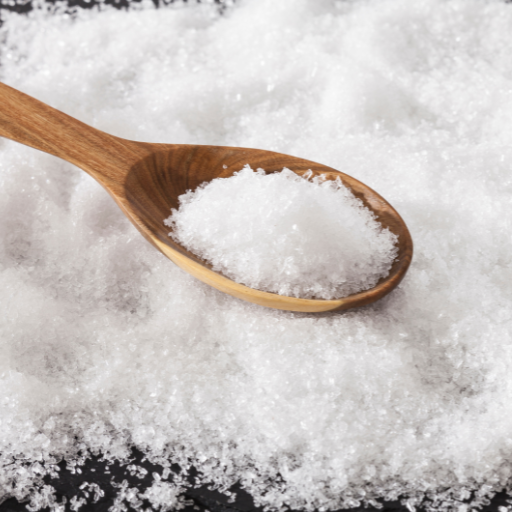
Due to the fact that it is very soluble and contains important nutrients, Epsom salt or Magnesium sulfate is able to perform remarkably well for gardening purposes. Magnesium on its part constitutes chlorophyll, which promotes photosynthesis; thus, ensuring healthy plant development. Epsom salt gives plants more green color and lively look in general. Besides magnesium sulphate improves uptake of other vital elements like nitrogen and phosphorus making them vigorous and increasing yield among others. Moreover, flowering plants including vegetables can benefit from this salt as it makes their fruits and blooming increase in number.
Enhanced nutrient absorption
Magnesium sulphate found in Epsom salts can markedly contribute towards improved nutrient absorption by plants through several pathways (from where). The first one is through magnesium which serves as a central atom within chlorophyll molecule without which photosynthesis cannot take place since light energy needs to be converted into chemical energy by the plants (when possible). Thus increased glucose production enhances growth rates of such developing parts.
Secondly, magnesium triggers activation of several enzyme systems that are key in many metabolic processes in life. These enzymes play a role in vital biochemical pathways such as nucleic acids synthesis proteins and lipids all of which are necessary for cellular division and multiplication (as applied anywhere). This way every mechanism would work efficiently if there were enough magnesium levels.
Finally there is Sulfate that stimulates amino acids proteins plus vitamins syntheses using epsom salt. For example assimilation of sulfate occurs readily by the plant leading to its inclusion into various organic compounds hence improving normal activities at the cell level. It is especially helpful for fast growing crops like tomatoes, peppers or roses because they need big amounts of Mg2+and SO42-ions for their proper development.
Improved chlorophyll production
The necessity of magnesium with regard to chlorophyll’s formation arises from the fact that it occupies the central ion position within its structure. Photosynthesis is the process where plants trap light energy and convert it into chemical energy using chlorophyll. Increasing its production leads directly to better photosynthesis that makes the plants sturdier and more robust in growth.
All these technicalities are highly substantiated by available scientific facts. For example, the soil should have 40-80 parts per million (ppm) of magnesium as it is required for best plant absorption. The leaves become yellowish which is a sign of lack of Mg in them (chlorosis), especially targeting the aged ones as younger tissues would be increasingly provided with this element.
Sulfate has dual effects on chlorophyll synthesis plus other essential organic compounds in plants. This indicates why balanced levels of magnesium and sulphate are crucial for not only high chlorophyll production but also general good health of the plant. The use of Epsom salt (magnesium sulfate) can reduce deficiencies upon regular evaluation of soil tests leading to proper magnesium supply by this nutrient element to any plant’s diet or composts.
Greater overall plant strength
Vital physiological processes that Epsom salt supports are critical in increasing the overall strength of plants. Magnesium which forms an important part of Epsom salt encourages cell wall structure as well as prompting the enzymes involved in the development of carbohydrates and proteins. This makes them able to tolerate environmental stressors like drought or temperature fluctuations leading to stronger, more resilient plants. Sulfate also helps in biosynthesis of amino acids hence protein vitamins necessary for growth and metabolism of plants. Consequently, all these factors contribute towards healthier and more vigorous plants having a strong root system and improved nutrient uptake, pest resistance, disease tolerance among others. Regular topdressing with Epsom salts based on soil test results ensures adequate supply of essential nutrients for optimal growth.
Application Methods
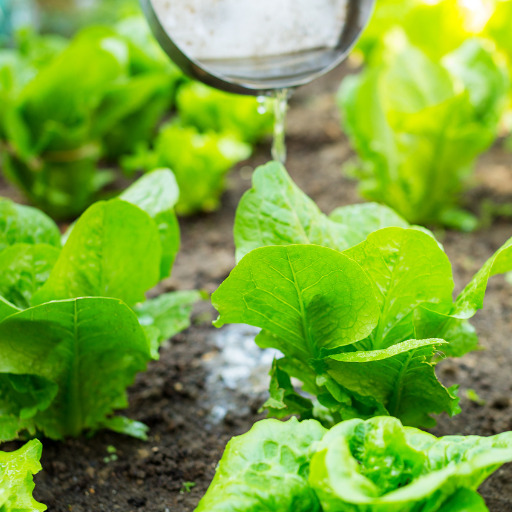
Several Epsom salt application techniques can be used depending upon the particular requirements and growth stages of the plants. One such method is dissolving Epsom salt in water to make a foliar spray. In most cases, a gallon of water contains one tablespoonful of Epsom salts which are then sprayed on leaf surfaces for quick absorption of magnesium and sulfate through epidermal cells. It is particularly useful in addressing deficiencies promptly.
One other way is introducing Epsom salt into the soil itself. For garden crops, 1 tablespoonful of Epsom salts may be mixed with the earth during planting or around already established plants’ base before a thorough watering is done to aid nutrient uptake. The organic content will get better and this method enhances their productivity as it becomes a part of the topsoil thereby improving its structure and fertility while at the same time reducing compaction.
With potted plans, 2 tablespoons full of Epsom salts should be added when potting or during regular intervals they are watered to maintain a uniform supply of nutrients. Recommended dose rate and frequency must therefore be based on soil analysis results and specific crop demands to avoid toxic effect due to over use or nutrient imbalances that cause deficiency symptoms.
Soil drenching techniques
Delivery of Epsom salt directly to the root area of a plant through soil drenching is an efficient method of nutrient uptake. The dissolved nutrients become more available for root absorption by thoroughly soaking the soil around the plant.
A standard solution for soil drenching contains 1 tablespoon of Epsom salt per gallon of water. It is safe from this concentration to achieve a balanced supply of magnesium and sulfate without causing any nutrient toxicity. Solution should be applied uniformly throughout the root zone, ensuring that the soil is well moistened but not waterlogged.
To make accurate application, a drip irrigation system can be used in delivering Epsom salt solution at controlled rates. This technique avoids wastage of water and ensures that nutrients are channeled to their specific required areas. Keep flow rates between 1-2 GPH (gallons per hour) with emitter types so as to ensure steady and easy management during drenching process.
When applying drenches to established plants or trees, it is advisable to do it early morning or late in afternoon so as to minimize evaporation and enhance absorption efficiency. During growing season repeat the drenching every 4-6 weeks for best results, adjusting frequency based on individual plant requirements and soil test recommendations.
Consistency in applying and checking levels of soil nutrients will improve efficiency of Epsom salt soil drench where more healthy and productive plants are promoted.
Applications for foliar spray
Application of diluted Epsom salt solution directly on plant leaves through a spraying bottle or pump sprayer can be done as foliar spray applications. The best way to prepare this is by dissolving one tablespoon of Epson salt into a gallon of water. Thus, it should not cause burn marks on the leaf while being efficient enough in delivering magnesium and sulphate.
Spray your plants’ leaves when temperatures have gone down such that early mornings and late afternoons should be chosen since evaporation losses will be minimal compared to during hot daytime hours. In order to have even coverage on their foliage, people need to use fine mist nozzle with a spray bottle or pump sprayer. Spraying both sides of the leaves including undersides where stomata are located would give better results in terms of nutrient uptake
To get the best results, repeat foliar applications every fortnight throughout the growing season. Observe how the plants react and change the frequency depending on their specific conditions. These are essential prerequisites for effective plant care and gaining maximum benefits from using Epsom salts to stimulate growth and improve productivity.
Frequency of Epsom salt application
It is crucial to customize the frequency and timing of Epsom salt application to meet specific plant requirements and environmental norms. Generally, applying Epsom salts every 4-6 weeks during the growingseason is recommended for general garden use so that regular magnesiumand sulfate replenishment necessary for plant health can be provided.
For some flowering plants like roses, a more frequent every two weeks may be advantageous. Mix one tablespoonful of Epsom salt with a gallon of water and apply it directly or spray as desired onto flowers. Tomato vines and pepper plants will also benefit from bi-weekly treatments especially during blooming in order to increase fruit production.
For large-scale agriculture, soil testing is vital in order to know exact nutrient requirements thus avoiding over-use. Depending on results from such tests, farmers applying these fertilizers might use them at rates of between ten-twenty pounds per acre generally at preplanting stages or when deficiency symptoms appear within a growing season.
This means that any changes in terms of timing and dosage should always be affected only after persistent soil nutrient levels monitoring as well as finding out what’s wrong with our crops through various signs which indicate ill health in times when we want to encourage healthy growth implying that these practices not only develops robustness but also ensures high yields.
Plants That Benefit Most from Epsom Salt
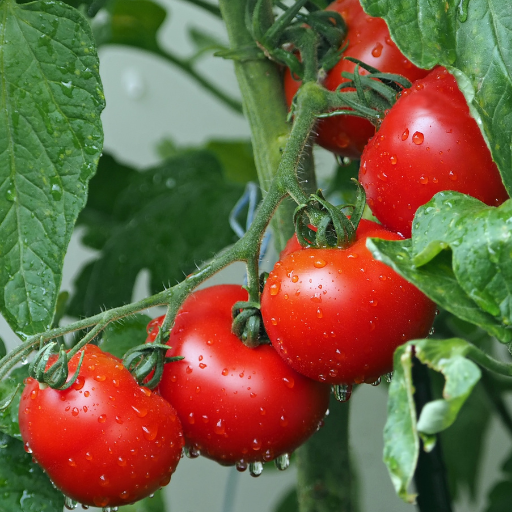
There is a number of plants that show remarkable improvements in growth and productivity when Epsom salt is included in their care routine. Tomato plants are among the top gainers with magnesium found in Epsom salt helping to prevent blossom-end rot as well as promoting bright and healthy foliage. Similarly, rose plants respond well to Epsom salts which boost color on the flowers and make them more vibrant. Additionally, Pepper plants are also major beneficiaries through regular applications which can result in higher yields and stronger fruit development. Therefore, magnesium balance in soil should be ensured since it is an important component of chlorophyll responsible for photosynthesis and nutrient absorption; in order to achieve optimum results therefore, one should keep checking the conditions of his/her garden soil for necessary application of Epsom salts basing on diverse types of plant that are cultivated.
Examples of Magnesium-loving Plants
Tomato plants are perfect examples since they love magnesium and using Epsom salt helps prevent common problems such as blossom-end rot or nutrient imbalance. Roses also need enough magnesium to thrive which improve the bloom coloration and increases vigor in a plant. For instance bell peppers and hot peppers benefit greatly from the use of Epsom Salt by getting improved fruit set as well as better general health indeed. These crops require close monitoring, adjusted levels of this mineral supplementing so as to optimize growth and finally increase productivity.
Specific Benefits Observed In Different Plant Species
Tomato plants undergo substantial improvement across different areas when Epsom salt comes into play. Magnesium enhances chlorophyll production hence directly affecting photosynthesis thereby reducing nutrient assimilation rate within leaves. This often leads to yellowing between veins due to lack of enough magnesium ions needed for production of high quality chloroplasts whose primary function is enabling photosynthesis absorption right from sunlight toward synthesized carbohydrates inside leaf cells Soils deficient in magnesium manifest themselves through their tendency to turn pale-yellow between their veins; normally, 1 gallon of water may be mixed with Epsom salt at the rate of one tablespoon every two weeks to achieve desirable results.
In relation to rose plants some experiments have proven that Epsom salts increase flower color and size. For example, magnesium is a crucial component in strengthening the cell walls and improving nitrogen and phosphorus uptake. As such, one common advice given is that each spring a half cup of Epsom salt should be spread around the base of a blooming plant.
Epsom salt can also greatly improve fruit set in pepper plants including bell peppers and jalapeños among others leading to decreased incidences of blossom-end rot. The best way is by side dressing the plants with 1 tablespoon of Epsom salt per foot plant height during growing season maintaining proper magnesium levels within soil. In conclusion regular soil tests can prove whether one needs magnesium nutrient in his/her pepper farm for better performance both on quality and quantity production of his/hers peppers or not.
Considerations and Potential Risks
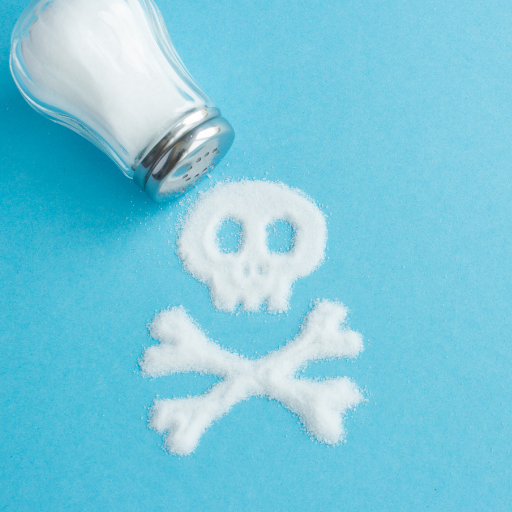
A number of considerations and potential risks must be taken into account when incorporating Epsom salt in plant care routines. Although improvements in magnesium sulfate are apparent, overuse can lead to soil imbalance, which may consequently affect the plant roots and microbiota negatively. This can cause high levels of soil salinity resulting in a decrease in water uptake by plants leading to root desiccation through over application. It is important to conduct a soil test before applying it so that existing nutrient levels are known, thereby avoiding unnecessary excesses. Regular monitoring of plant response and adjustment of the frequency as well as concentration of Epsom salt treatments helps prevent toxicity.
Potential for Overuse & Toxicity
There are other problems rooted in soil chemistry and plant physiology, which result from an excessive use of Epsom salt. High magnesium sulphate levels in the soil upset balance between other essential nutrients like calcium and potassium causing deficiencies that retard growth. According to technical references, soil magnesium levels should ideally be maintained between 50 to 200 ppm (parts per million) to avoid toxicity.” Excessive quantity of magnesium in the soils causes high saltiness; this reduces the ability of plants to take up water hence signs like drought stress could appear even if enough water is available because low availability of Mg ions has been shown to cause stomatal closure leading to reduced transpiration rates (Beaton 1990). Most common crops have threshold electrical conductivity (EC) values for salinity tolerance ranging from 1.5 – 4 dS/m.
In addition, having too much Epsom salts can destroy helpful organisms within the ground with play a major role in recycling nutrient elements and organic matter decomposition activities. Checking soil’s or plant’s tissue for Mg level is also important as precautionary measure while dealing with such cases. Soil testing using methods similar Mehlich-3 extraction protocol gives reliable measures relating to available magnesium content. Besides such preventive measures as visual inspection of the plants for typical nutrient imbalance symptoms such as interveinal chlorosis for magnesium toxicity, on a regular basis would be helpful. These measures are suggested in order to properly employ Epsom salt and keep it from being overused and becoming toxic.
Compatibility with Organic Gardening Practices
It is important to use Epsom salt judiciously and knowledgeably even though it is compatible with organic gardening practices. In general,. It is generally considered safe for organic gardens by OMRI (Organic Materials Review Institute) and should conform to their guidelines when used. As provided in the top three sources, Epsom salt can be very beneficial for magnesium deficiency plants; it may come as foliar spray or soil amendments. For foliar applications recommend 1-2 tablespoons per gallon of water applied bi-weekly. Soil applications suggest directly into soil “1-2 teaspoons per foot of plant height.”
The soluble magnesium and sulfur in Epsom salts have technical parameters that help improve plant vigor through nutrient uptake improvement. However, overdose should be avoided to prevent imbalanced nutrition’s and salinity issues due to the soils. Monitoring pH levels of soil that should ideally range between 6.0 – 7.0 in most cases helps mitigate these risks. Therefore, regular soil testing will guide how often Epsom salt application should take place as well as how much of it needs to be given so that it meets this specific garden ecosystem requirements only.
Environmental impact and sustainability concerns
When using Epsom salt in gardens, deliberation on its environmental impact and sustainability is essential for averting any possible undesired results. Even though it is a natural substance and generally safe to use, exceeding the recommended application rates can turn out to be disastrous for soil and water. Some researches have shown that excessive magnesium sulfate could increase soil salinity as well as leach other necessary nutrients imposing risks of plant growth interruption and degradation of soil health. Moreover, mining activities as well as processing operations related to Epsom salts consume much energy and resources which make this issue more about sustainability. To avoid or minimize these problems, gardeners ought to follow instructions strictly, get their soils tested regularly and add organic substances periodically in order to maintain good soil conditions
Frequently Asked Questions (FAQs)
Q: What are the benefits of using Epsom salt for plants?
A: Epsom salt for plants can provide essential nutrients like magnesium and sulfur, which help plants absorb nutrients more efficiently and promote overall growth and health.
Q: How do I use Epsom salt in the garden?
A: To use Epsom salt in the garden, you can dissolve one tablespoon of Epsom salt per gallon of water and apply it to your garden soil or as a foliar spray to help plants absorb nutrients better.
Q: Can Epsom salt prevent blossom end rot in tomatoes?
A: While Epsom salt can help provide magnesium, it is not a direct solution to prevent blossom end rot in tomatoes. Blossom end rot is more often caused by calcium deficiency, so it is important to ensure adequate calcium levels through proper fertilization and soil management.
Q: How much Epsom salt should be used for garden plants?
A: Generally, one to two tablespoons of Epsom salt per gallon of water can be used to help garden plants thrive. Always perform a soil test to determine the specific needs of your plants before application.
Q: Is using Epsom salt for tomato plants beneficial?
A: Yes, Epsom salt for tomato plants can be beneficial because it provides essential magnesium, which can enhance photosynthesis and help prevent yellowing of leaves. However, usage should be balanced and based on soil test results.
Q: Can Epsom salt help rose bushes?
A: Roses can benefit from Epsom salt because it provides magnesium, which can promote brighter blooms and more vigorous growth. Add Epsom salt by mixing one tablespoon of it in water and applying it around the base of the rose plants.
Q: How often should I apply Epsom salt to potted plants?
A: For potted plants, you can apply Epsom salt once a month. Dissolve one tablespoon of Epsom salt per gallon of water, and water your potted plants with the solution to provide them with essential nutrients.
Q: Are there any plants that don’t like Epsom salt?
A: Most garden plants benefit from Epsom salt, but it is essential to perform a soil test before applying it. Overuse of Epsom salt might harm some plants by causing nutrient imbalances.
Q: How can Epsom salt be used to help peppers and tomatoes?
A: Epsom salt can be particularly beneficial for peppers and tomatoes as it provides magnesium, which is crucial for chlorophyll production and fruit development. Apply Epsom salt per gallon of water regularly to boost growth and health.
Q: How does Epsom salt work to benefit plants?
A: Epsom salt works by providing plants with magnesium and sulfur, essential elements that enhance nutrient uptake, improve photosynthesis, and promote healthy growth and development in various garden and houseplants.






